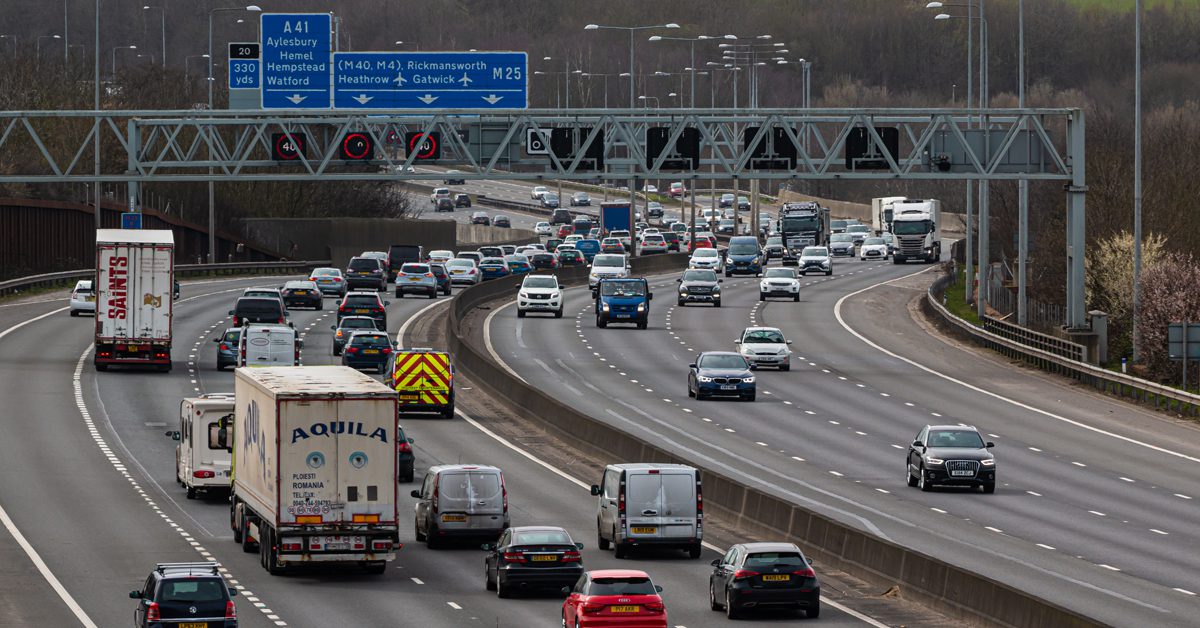Concerns that Smart motorways changes don’t go far enough
Changes to Smart and All Lanes Running (ALR) motorway won’t improve safety unless more is invested in monitoring.
Changes to Smart and All Lanes Running (ALR) motorway won’t improve safety unless more is invested in monitoring.

The UK government’s changes to the way it runs Smart and All Lanes Running (ALR) motorways will not remedy serious problems unless it also addresses staffing shortages among the traffic officers and a lack of capacity at the regional operating centres responsible for road safety, the union Prospect has warned.
Smart and ALR motorways use the hard shoulder either all, or part of the time, which can be dangerous if someone breaks down as they have no safe place to pull over. The new proposals say there will be no new Smart motorways without additional safety measures, which are to include the use of new radar detection technology which can spot when a car is stationary.
Existing Smart motorways will have the radar technology installed no later than September 2022. Other measures include upgrading cameras so motorists ignoring closed lanes indicated by red X signs can be caught and prosecuted and putting more signs up about distances to emergency refuge areas.
The RAC’s head of roads policy, Nicholas Lyes, said the motoring organisation was “concerned that drivers will still need to wait up to 18 months before all cameras are enforcing red X lane closed signs”. He said: “Enforcement is vital in getting all drivers to obey these signs as anyone who disregards them is at a much greater risk of being in collision with a stranded vehicle.”
Reacting to the Department for Transport’s update, AA president Edmund King said: “It is encouraging that progress has been made on our demands to make ‘smart’ motorways safer. The objective should be to create the safest roads we can.
“The number one improvement advocated by the AA and our members is to increase the number of emergency refuge areas (ERAs) and retrofit them to older schemes to ensure they are placed at approximately 0.75 miles apart.
“More ERAs, together with improving the accuracy of stopped vehicle detection radar, should be the urgent priorities.”
Reflecting on the proposal to increase the radar detection technology to monitor broken down vehicles stationary in a live lane, Garry Graham, Prospect deputy general secretary, commented: “The government review into Smart and ALR motorways makes some important recommendations, in particular the upgrade and introduction of new technology to make them safer. What it doesn’t address is the fact that we simply do not have enough traffic officers or regional operating centre (ROC) operators to make the system work.”
He added: “Technology can identify breakdowns, but you need an operator in an ROC to spot the problem, and then you need traffic officers to resolve it. Numbers of both are in decline. The review also falls short on addressing the unsafe nature of managing an incident on ALR motorways. Incursions into closed lanes have gone up significantly since the introduction of ALR motorways, putting traffic officers at risk.”
To read in more detail about the UK’s Smart motorways and the latest statistics on their safety and death rates, follow this link:
BizSpace
Linford Forum
18 Rockingham Drive
Milton Keynes
Buckinghamshire
MK14 6LY
What3words reference:
Make an enquiry:
Company No. 05174302
VAT No. 844 5092 22

 Long working hours killing 745,000 people per year, study finds
Long working hours killing 745,000 people per year, study finds